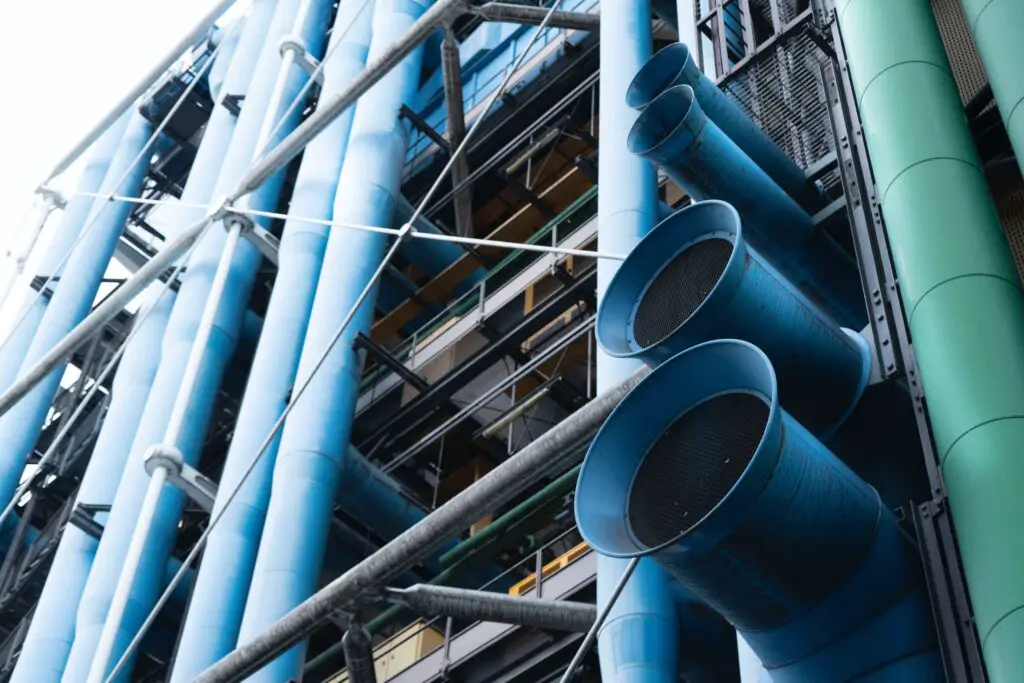Conduits play a crucial role in modern construction, serving as a means of housing and protecting various utilities, such as electrical wiring, communication cables, plumbing pipes, and HVAC systems. They form an essential part of infrastructure development, ensuring the safe and efficient flow of services within buildings and throughout cities.
This article explores the significance of conduits in construction, their types, installation methods, and the benefits they offer to both builders and end-users.
Types of Conduits:
Conduits are available in various materials, each offering specific advantages and suitable for different applications. The common types include:
a. Rigid Metal Conduit (RMC): RMC, made of steel or aluminum, provides excellent protection against physical damage, moisture, and fire. It is commonly used in industrial and commercial settings.
b. Electrical Metallic Tubing (EMT): EMT, typically made of galvanized steel, is lightweight and easy to install. It is commonly used for exposed electrical installations.
c. Flexible Metal Conduit (FMC): FMC consists of a flexible metal sheath that allows for easier routing in areas with tight bends and vibrations, making it suitable for HVAC and machinery installations.
d. PVC Conduit: PVC conduits are made of polyvinyl chloride and are lightweight, cost-effective, and resistant to corrosion. They are widely used for electrical and low-voltage communication installations.
e. HDPE Conduit: High-density polyethylene (HDPE) conduits are durable, flexible, and resistant to chemicals and UV radiation. They are commonly used for underground telecommunications and electrical installations.
Installation Methods:
Conduit installation involves several steps to ensure proper functionality and longevity. The process typically includes the following stages:
a. Planning and Design: Before installation, careful planning and design are essential to determine the optimal routing, sizing, and type of conduits required to accommodate the specific utility needs.
b. Routing and Fixing: Conduits should be routed efficiently, taking into account factors such as accessibility, expansion joints, and future maintenance requirements. They are fixed securely using appropriate clamps or brackets.
c. Pulling and Installing Cables/Pipes: Once the conduits are in place, cables or pipes are pulled through them using specialized tools, ensuring proper connections and avoiding excessive bends or tension.
d. Sealing and Protection: Conduits must be adequately sealed at entry and exit points to prevent the ingress of water, dust, or pests. Protective measures, such as conduit sleeves, are implemented in areas prone to mechanical damage.
Benefits of Conduits in Construction:
a. Protection and Safety: Conduits provide a protective enclosure for utilities, safeguarding them against physical damage, environmental factors, and fire hazards. This protection ensures the safety of occupants and minimizes the risk of service disruptions.
b. Organization and Easy Maintenance: Conduits allow for neat and organized routing of utilities, simplifying maintenance and troubleshooting tasks. Identifying and accessing specific cables or pipes becomes more straightforward, reducing downtime during repairs or upgrades.
c. Future-Proofing Infrastructure: By installing conduits with larger capacities than the immediate requirements, future expansions or upgrades become more manageable and cost-effective. Conduits offer the flexibility to accommodate evolving technology and changing utility needs.
d. Aesthetics and Adaptability: Conduits contribute to the visual appeal of buildings by concealing unsightly cables and pipes. They can be integrated into architectural designs and easily adapted to accommodate different services, allowing for versatility in construction.
Conclusion:
Conduits play a pivotal role in modern construction, facilitating the efficient and safe transmission of utilities. Their installation ensures protection, organization, and flexibility in infrastructure, benefiting both builders and end-users alike. From providing safety and easy maintenance to future-proofing infrastructure and enhancing aesthetics, conduits are an indispensable component of construction projects.
The advantages of conduits extend beyond individual buildings. In larger-scale construction, such as urban development or industrial complexes, conduits enable the seamless integration of various services across multiple structures. This integration allows for centralized control and monitoring systems, leading to enhanced operational efficiency and resource management.
Moreover, conduits play a crucial role in sustainable construction practices. By using conduits, builders can implement energy-efficient solutions such as smart lighting systems, HVAC controls, and renewable energy installations. Conduits provide the necessary infrastructure for these sustainable technologies, ensuring proper installation, protection, and maintenance.
In addition to their functional benefits, conduits also contribute to cost savings throughout the lifespan of a building or infrastructure. Their protective properties help prevent damage to utilities, reducing the risk of costly repairs and downtime. The organized and easily accessible layout of conduits enables swift troubleshooting and maintenance, minimizing disruptions and associated expenses.
Furthermore, the adaptability of conduits allows for future modifications or upgrades without the need for extensive structural changes. As technology advances and utility demands evolve, the flexibility offered by conduits enables easy integration of new services or the replacement of outdated systems, resulting in long-term cost savings.
To ensure the optimal utilization of conduits, it is essential to involve experienced professionals, such as architects, engineers, and electrical contractors, during the planning and installation stages. Their expertise in designing and implementing conduit systems helps maximize efficiency, safety, and functionality.
In conclusion, conduits form a critical component of construction projects, providing a multitude of benefits to both builders and end-users. Their role in protecting utilities, organizing infrastructure, facilitating future expansion, and enhancing aesthetics cannot be overstated. As construction practices continue to evolve, the importance of conduits in creating efficient and sustainable built environments will only grow. Embracing the use of conduits in construction is a testament to the industry’s commitment to safety, efficiency, and long-term value.
To see other material construction prices, please see here.
To know other construction guides, tips, and methodology for beginners, veterans, and contractors, please see here.

